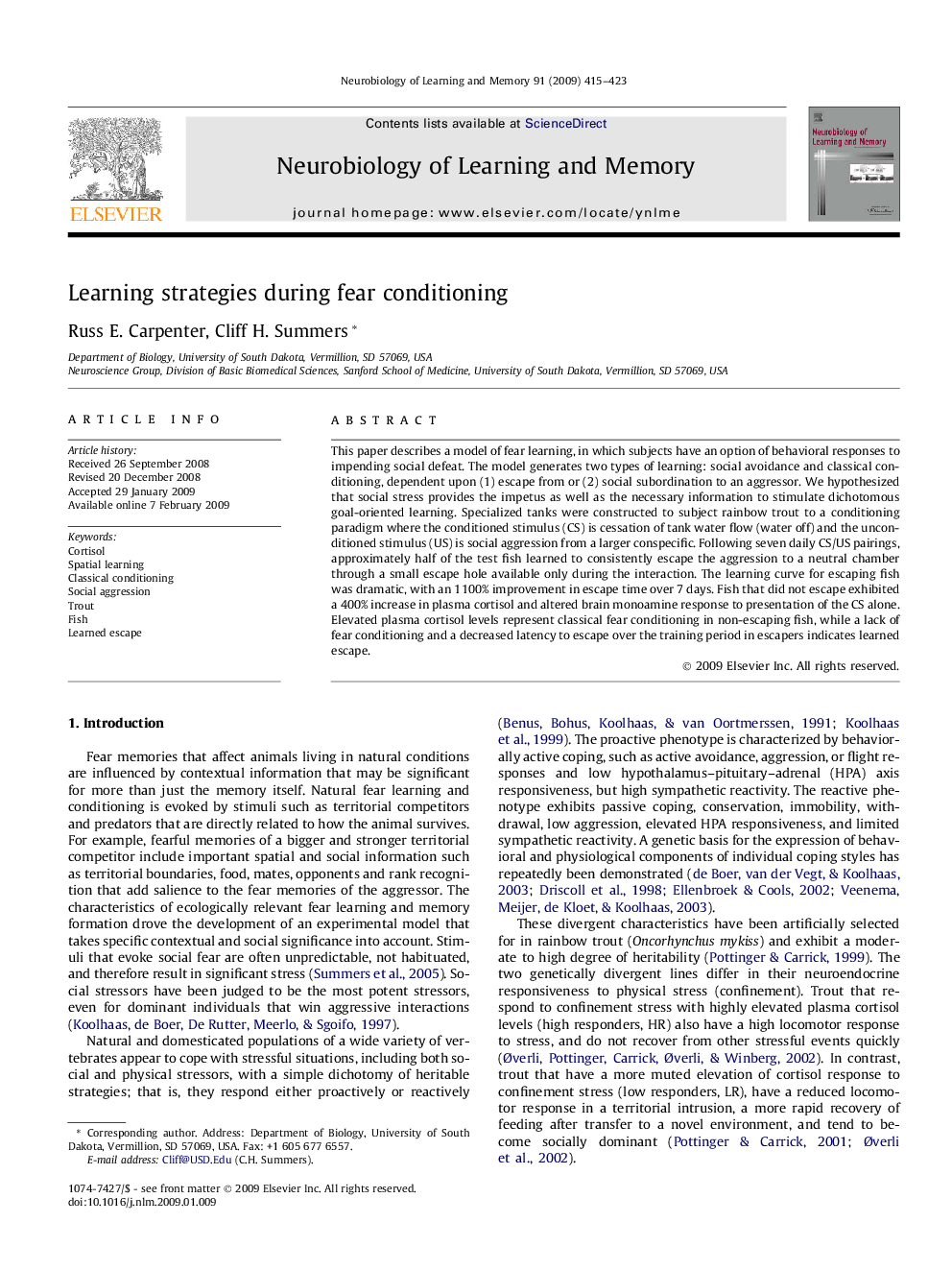| Article ID | Journal | Published Year | Pages | File Type |
|---|---|---|---|---|
| 937086 | Neurobiology of Learning and Memory | 2009 | 9 Pages |
This paper describes a model of fear learning, in which subjects have an option of behavioral responses to impending social defeat. The model generates two types of learning: social avoidance and classical conditioning, dependent upon (1) escape from or (2) social subordination to an aggressor. We hypothesized that social stress provides the impetus as well as the necessary information to stimulate dichotomous goal-oriented learning. Specialized tanks were constructed to subject rainbow trout to a conditioning paradigm where the conditioned stimulus (CS) is cessation of tank water flow (water off) and the unconditioned stimulus (US) is social aggression from a larger conspecific. Following seven daily CS/US pairings, approximately half of the test fish learned to consistently escape the aggression to a neutral chamber through a small escape hole available only during the interaction. The learning curve for escaping fish was dramatic, with an 1100% improvement in escape time over 7 days. Fish that did not escape exhibited a 400% increase in plasma cortisol and altered brain monoamine response to presentation of the CS alone. Elevated plasma cortisol levels represent classical fear conditioning in non-escaping fish, while a lack of fear conditioning and a decreased latency to escape over the training period in escapers indicates learned escape.
